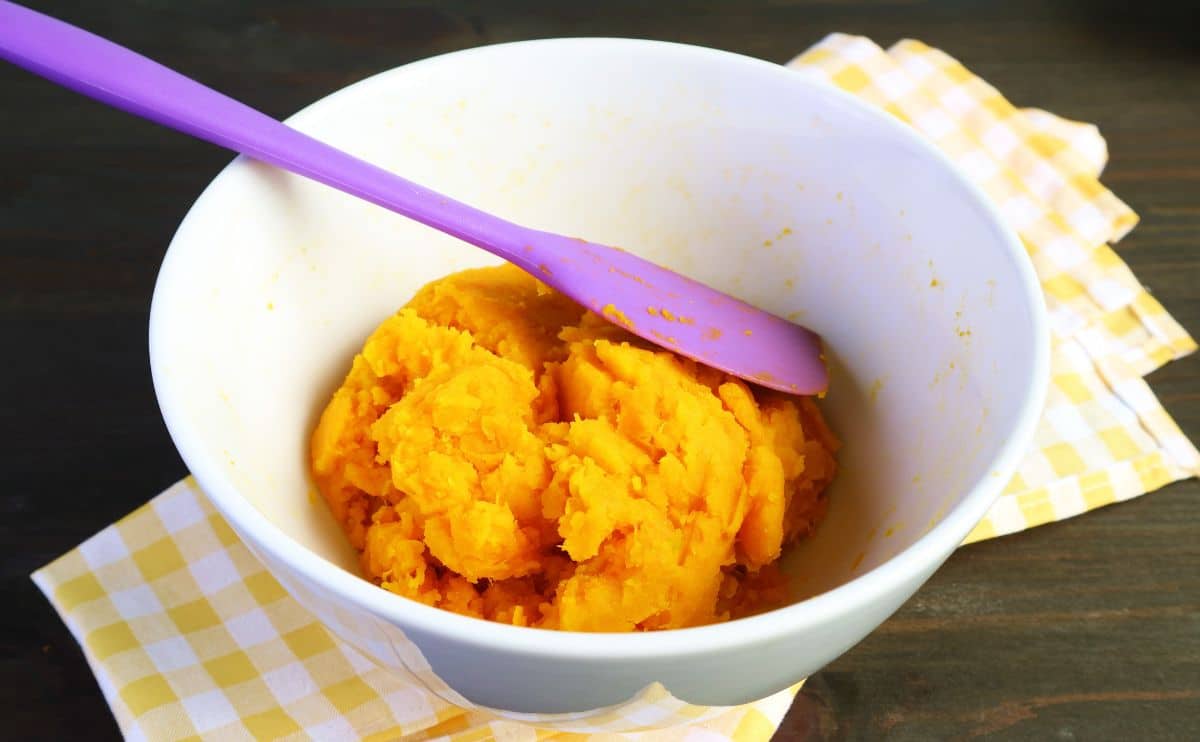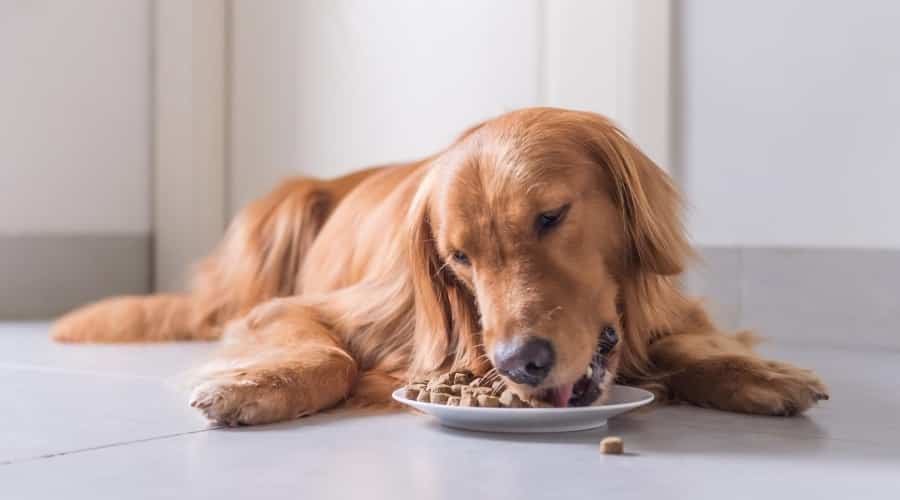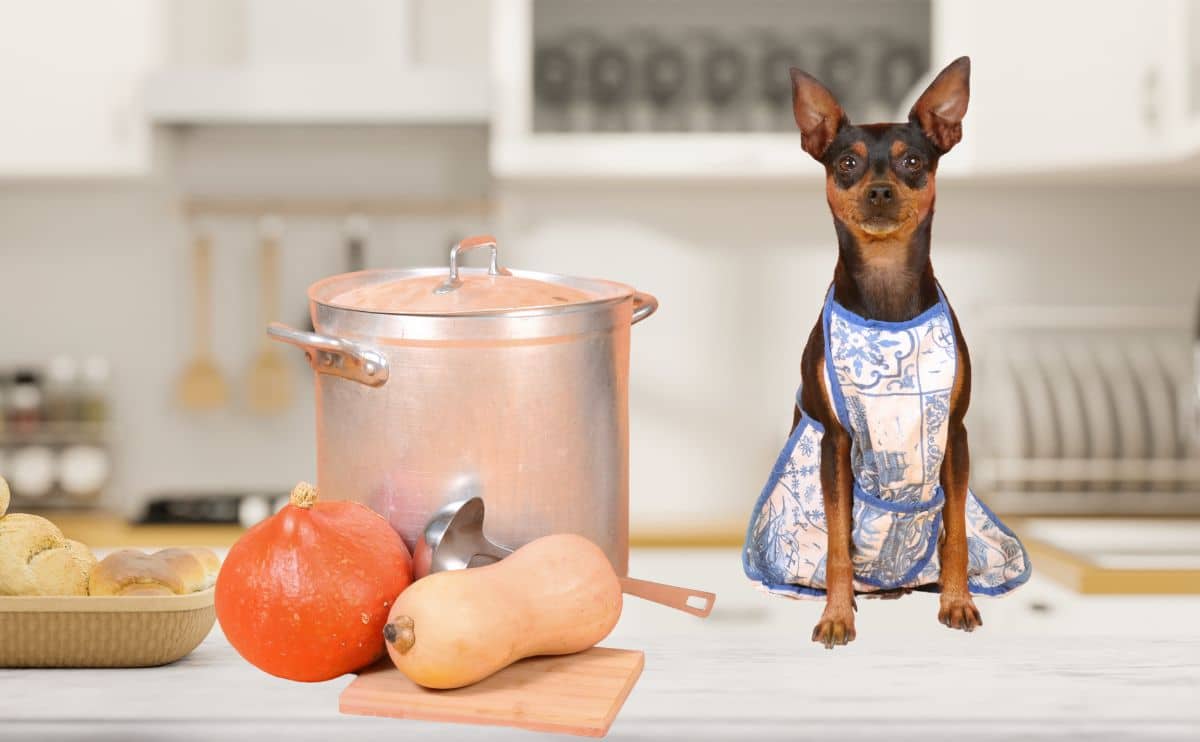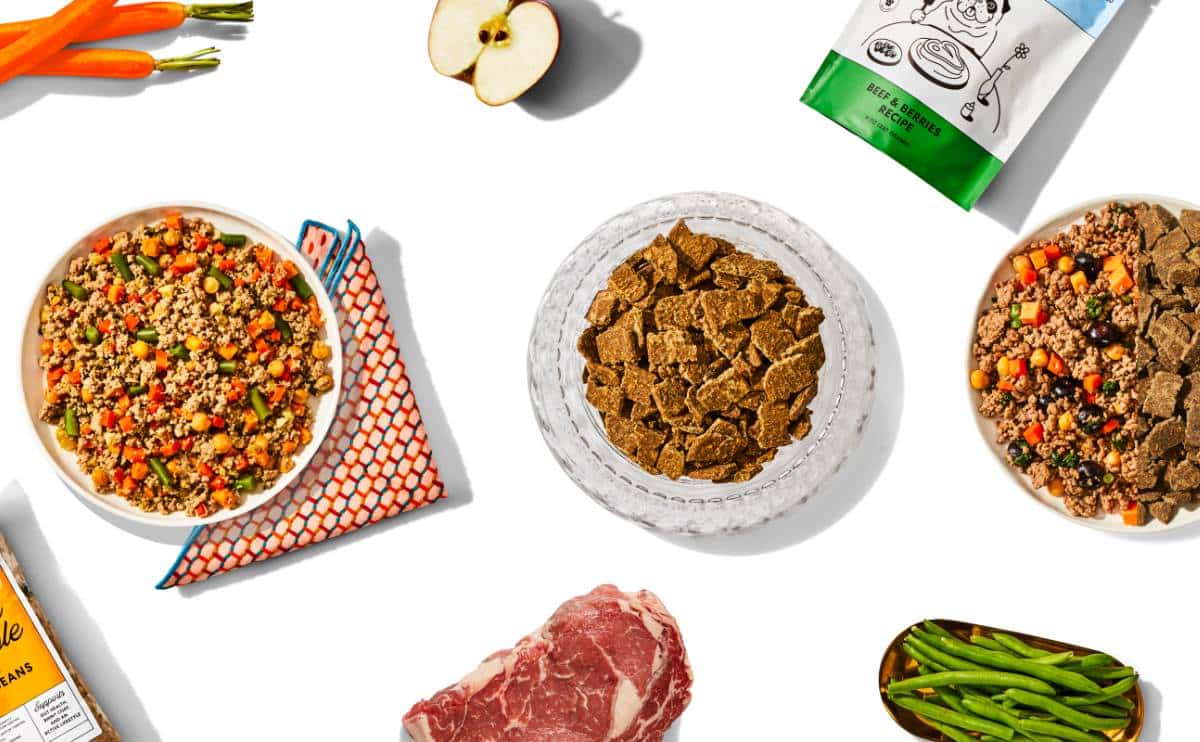Chihuahua Feeding Chart: How Much To Feed Your Chi Puppy
When you purchase through links on our site, we may earn a commission. Here’s how it works.
Chihuahuas are an incredibly popular dog breed, and welcoming home a tiny Chi puppy is an experience one will never forget. While some things about puppy care are universal, feeding your new Chihuahua puppy differs from feeding a bigger breed like a Labrador Retriever or even a medium-sized French Bulldog. Fortunately, there are tools like our Chihuahua feeding chart to help make things a little clearer.
Table of Contents
Chihuahuas are popular for many reasons, the first being their tiny size and adorable appearance. These pint-sized pups have huge personalities and will undoubtedly capture your heart. Because they are the smallest dog breed in the world, these pups require a little special care. We know first-hand that feeding these pups just any average dog chow is not always the healthiest choice. Along with picking high-quality recipes, knowing how much your Chihuahua puppy and an adult dog should eat is essential.
Whether you are a first-time Chihuahua owner or well-experienced, we are happy to provide this information as a reference point. Wordless of what phase of pet ownership you are in, it is normal to have questions. Seeking out information and ensuring we are doing the best we can for our pups is just part of being a responsible dog owner. It is also important to keep in mind that every dog is different. While we can offer some general guidelines and information on what to expect, this is not a substitute for advice from a licensed veterinarian or pet nutritionist. Jump in, and let’s get into the details about how much to feed your Chi pup.
Chihuahua Puppy Feeding Chart At A Glance
| Age | Type Of Food | Cups Per Day | Meals Per Day |
|---|---|---|---|
| 0 – 30 days | Mother’s Milk | n/a | unlimited |
| 4 – 7 weeks | Mother’s Milk and puppy mush | n/a | unlimited |
| 8 – 12 weeks | Mother’s Milk and puppy mush | n/a | 4 – 6 |
| 12 weeks to 6 months | Puppy Kibble | 1/8 – 1/2 | 3 – 4 |
| 6 – 9 months | Puppy Kibble | 1/2 – 1 | 3 – 4 |
| 9 – 12 months | Puppy Kibble/Adult Dog Food | 1 – 2 | 3 |
| 12 Months and up | Adult Dog Food | 1 – 2 | 2 – 3 |
How Much Should A Chihuahua Puppy Eat?

I am an experienced Chihuahua owner and know firsthand that overfeeding these pups can be extremely easy. Because of that, owners must know exactly how much these dogs need to eat and at what age. Make sure you purchase an appropriately sized kibble. Feeding them too large kibble will cause excessive wear and tear on their teeth, leading to early dental decline.
It is essential to remember that newborn Chis are incredibly tiny, only about 3 inches long. They weigh almost nothing at birth and will reach between two and seven pounds as adults. Though they are small dogs, that is an incredible growth rate. Because of this, it is important to note that Chihuahuas need more protein than other canine breeds. This is because of their petite size and exceptionally high metabolism. Try to stick to a diet that has 20 to 30% protein. And always look for protein sources from named meats, including fish, poultry, beef, lamb, duck, or eggs.
Week 1
Chihuahua puppies are incredibly tiny and helpless in the first few weeks of birth. They are also born blind and deaf, as their ears and eyes have not yet opened. Ideally, they will need to drink their mother’s milk as much as possible. Mother’s milk is packed with colostrum, providing puppies with vital germ and infection-fighting protection and nutrients to boost growth. The antibodies from colostrum are essential, and puppies must be encouraged and allowed to nurse in these first few weeks. If puppies are having trouble getting enough milk or mother dogs are refusing to nurse, ask your veterinarian about puppy milk formula substitutes.
Week 2
At two weeks old, puppies will be a little sturdier, and their eyes and ears will start to open. It will become apparent which puppies are more active and stronger. Owners must ensure that all puppies in the litter can access their mother’s milk. Those who are not getting enough will need a supplement. This is a very sensitive time in their development, and owners must do everything possible to ensure proper nutrition.
Week 3
By three weeks, puppies will start to take their first shaky steps. They will be very off-balance and still quite tiny but have begun to notice the world around them. They are still too young to be on any kind of solid chow or puppy mush and should continue to receive sustenance from their mother’s milk. Your veterinarian can recommend a good milk substitute if your pup is not getting enough. Right now, most days will involve a lot of eating and sleeping.
Week 4
At four weeks, puppies will still need their mother’s milk but can be introduced to a watery version of puppy mush. This should preferably consist of high-quality small-breed puppy chow, wet or dry, mixed with water. Right now, this mush will be mainly water, About three times as much water as food. Even if pups are not interested in the mush, it is best to start offering it now so they get used to the smell and eventually become curious. Weaning will be happening very soon.
Week 5
Five-week-old puppies will start to feel a little more solid and become steadier on their feet. They are more curious now and will want to explore the area around them. By now, some baby teeth will likely be poking through, and they may show increased interest in the puppy mush. While they will still be nursing, it is crucial that this puppy mush start to become part of their diet.
Week 6
At six weeks old, puppies will still nurse, but now is the time to start the weaning process. You can do this by separating puppies from their mother for a short period of time and offering them puppy mush. It will take a few days for puppies to develop a sustained interest in this mush, though this process happens quicker for some than others.
Week 7
At seven weeks, we continue the weaning process, allowing puppies to nurse and giving them extended periods without their mom and access to solid food in the form of puppy mush. Once they start to show interest and consistently nibble at it for a few days, you can slowly decrease the amount of water. However, this is a very slow process, and it’s different for every pup. Remember that these are still very tiny dogs, so even a few nibbles or a teaspoon of solid chow goes a long way.
Week 8
Around eight weeks old, Chihuahua puppies can start being ready to go to new homes. Because of this, they must be able to sustain on puppy chow rather than their mother’s milk. Right now, they should be well into the weaning process, and some pups may even be entirely off of their mother’s milk. You can still add milk supplement to their puppy mush if you feel that they need this extra bit of sustenance. Again, the solid-to-liquid ratio should continue to even out, but make this transition slowly. You do not want to overwhelm this tiny pup’s fragile digestive system. Pick one brand and stick with it for the long haul, if possible. Changing these pups’ diets can trigger uncomfortable digestive issues.
Week 9
At nine weeks old, your Chi puppy will likely be primarily, if not entirely, on puppy chow. There are plenty of options for dry and wet. Your pup will be extremely active and growing rapidly right now, so they will need a lot of sustenance. Their mother’s milk will not be enough to sustain them, which is another reason the weaning process must be started around four to six weeks. If you are having trouble with your pup getting enough or refusing to eat the puppy food, it is crucial to reach out to your veterinarian right away.
Additionally, many puppies may experience digestive upset right now if they head to new homes. Because of this, new owners should ask what food a puppy has been on and stick with that brand for a while. Instead of rapidly changing, transition the old food out over time.
Week 10
Your Chihuahua puppy should be completely weaned from her mother’s milk by ten weeks old. She may still like to have milk substitutes or water mixed in with her puppy food, which is fine if she gets enough to eat. Continue to offer several small meals a day. Remember, this is a pivotal time of incredibly rapid growth. Because these little dogs have such high metabolisms, they use more energy than larger braids. They must recoup this through their diet.
Week 11
At 11 weeks, your puppy should be on a regular feeding schedule. Three to four meals a day is normal. Remember not to allow her to overeat, even if she is experiencing a new enthusiasm for solid food. Puppies may start to get a little picky right now and need to learn that eating at mealtimes is best. While a snack or two throughout the day is normal, stick to a regular feeding schedule if possible. Free feeding a Chihuahua is tricky and not a great idea as they will overeat.
Week 12
At 12 weeks, was three months old, your Chi puppy should be 100% on puppy chow. If they still prefer the puppy mush, slowly phase out the water or liquid and offer more solid food. Stick with a small-breed, small-sized kibble if you go with dry food. Remember that your puppy is heading into a several-month span of intense growth right now. She will need high-quality nutrition to help support this growth. Stick with a high-quality, small-breed puppy chow or fresh food for the next several months. You will not need to worry about transitioning her to adult food until she is between 6 and 12 months old.
A general guideline for Chihuahua puppy eating schedules is as follows:
- Chi puppies under three months old must eat at least four to six times daily.
- Puppies three to six months need three to four meals a day.
- Six-month-old pups should be on three meals a day.
Adult Chihuahuas technically can be switched to two meals a day. However, from experience, we know that is not quite enough. For our 4.5-pound Chi, three smaller meals and a couple of treats throughout the day were the right combination to provide her with enough energy and stamina, even in older age.
Chihuahuas will lose their milk teeth and grow in their adult teeth around 8 to 9 months. This is also when owners can start transitioning them to adult chow.
Chihuahuas usually reach their adult size between 9 and 12 months of age, though they are considered adolescents until they reach two or three years old. They will continue to fill out and thicken up until around 18 months old.
Newborn Chihuahuas can weigh as little as 2 ounces and generally do not reach a pound until they are 12 or 13 weeks old. On average, adult Chihuahuas weigh between four and six pounds, Which is remarkable growth. They will continue to need high-calorie dog food with high protein content throughout their entire lives.
No matter the size of your Chi puppy, she must receive proper nutrition from her very first newborn days. This will set the foundation for proper growth and development and help keep her healthy well into old age.
Different Types Of Puppy Food

Pet parents can choose from five main categories of dog foods. These are:
Kibble (Dry)
Kibble, or dry, is a common and economical choice. Dry kibble is a part of most dogs’ diets, comes in large-sized bags, and stays fresh for much longer than other options. Additionally, kibble helps keep a dog’s teeth clean by scraping them.
Semi-moist varieties of kibble, especially those that look like human meats, tend to be very low in nutritional value. It’s best to stay away from these. There are several choices of kibble on the market. These include air-dried, dehydrated, and some freeze-dried products, so owners have plenty of options. It is always best to pick small-breed and smaller-sized kibble for the Chihuahua. This is very important to their dental health. This breed is prone to periodontal and severe dental disease, which can develop from eating too large and hard kibbles.
Canned Or Pouch (Wet)
Wet dog food comes in a can, pouch, or sometimes loaf. The canned and pouched kinds stay good for a very long time and are sold commonly in grocery stores and online retailers. Canned has a higher moisture content and is generally more expensive. It is essential to pay attention to the nutritional information on these labels, as not all canned options offer complete nutrition. Some are designed to be supplemental rather than a primary meal. Wet options also tend to have up to 75% water content. While this means products will weigh more, it also has less nutritional value. Pay attention to the ingredients and stick to high-protein wet foods for your Chi pup.
Fresh (Human-Grade)
Human-grade fresh dog foods are designed by veterinarians and made from top-quality, limited, fresh ingredients. There are several subscription services, including The Farmer’s Dog and Nom Nom, where owners can have freshly made doggy chow delivered and frozen to their door. Subscription human-grade services are more expensive than traditional dog diets but offer top nutritional value. If money were not a concern, fresh meals would likely be the choice every pet owner would make.
Home-Cooked
Pet owners sometimes want to cook meals for their pets themselves. This can be for dietary reasons or because they believe they can provide better nutritional content than commercial options. If owners want to cook their pets fresh meals, consulting with a veterinarian or pet nutritionist is best. Also, make sure foods are only prepared for canine consumption and do not contain any common spices or added ingredients we humans love so much.
Raw Or BARF
BARF Refers to biologically appropriate raw food, or bones and raw food. Some pet owners prefer this option. However, this is not appropriate for the Chihuahua. Due to this pup’s small size and sensitive stomach, it is best to feed them high-quality commercial food. Plenty of freeze-dried options provide raw nutrition without any safety risks if you are interested in raw food or treats.
Puppy vs. Adult Food
Puppies require a higher number of calories, fat, protein, and minerals compared to adult dogs. Small breeds have a higher metabolism than larger dogs and need nutrient-dense, high-calorie, and protein-rich meals. This is true for both puppies and adult dogs. Feeding small breeds, large breeds, or even general formula dog chow may prevent them from getting the proper nutrient balance.
Adult dogs’ requirements differ as they need fewer calories and less protein. Adult dog food contains more filler ingredients. The Association of American Feed Control Officials (AAFCO) has provided guidelines for dog food which include:
- Protein – 22% for puppies and 18% for adults
- Fat – 8% for puppies and 5% for adults
- Calcium – 1% for puppies and 0.6% for adults
- Phosphorus – 0.8% for puppies and 0.5% for adults
- Sodium – 0.3% for puppies and 0.06% for adults
- Arginine – 0.62 for puppies. 0.51 for adults.
- Protein – 22% for puppies. 18% for adults.
- Fat – 8% for puppies. 5% for adults.
- Calcium – 1% for puppies. 0.6% for adults.
- Phosphorus – 0.8% for puppies. 0.5% for adults.
- Lysine – 0.77% for puppies. 0.63% for adults.
- Leucine 0.72 % for puppies. 0.59 for adults.
- Chloride – 0.45 % for a puppy. 0.095 for adults.
- (This is not a complete list)
The Importance Of High-Quality Nutrition
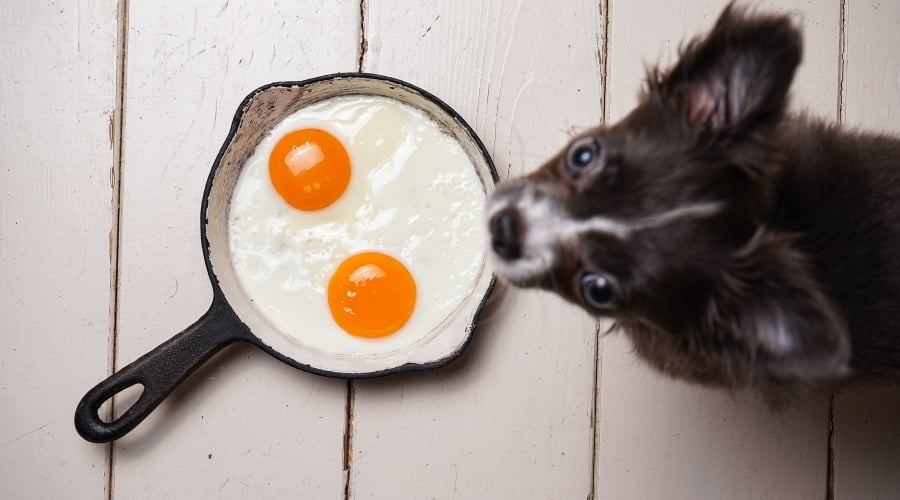
High-quality nutrition from day one is crucial for all breeds, especially Chihuahua. This breed can be picky and develop a sensitive stomach, so setting good eating habits early is important. Stay away from low-quality brands that use a lot of fillers like corn and wheat gluten, preservatives, artificial colors, and artificial flavors. These foods will not benefit your pup in the long run. Spending the extra few dollars for higher quality nutrition is very important, and because Chis are so small, this is more affordable for them than for some larger breeds. Simply put, they eat less, so owners may feel more comfortable spending more money on it.
The best choice for your Chi depends specifically on her size, genetics, age, and individual health issues. Remember that adult dogs need fewer calories than puppies. Chihuahuas need high calories because they are small, which means something different than larger breeds. For example, a 2-and-a-half-pound Chihuahua will need 80 to 120 calories daily. They need about 30 to 40 calories per pound of body weight.
At A Glance: Best Dog Food For Chihuahuas
| Puppy | Adult | Senior | Wet | Dry |
|---|---|---|---|---|
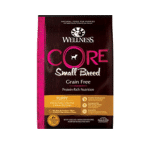 | 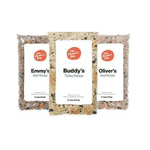 | 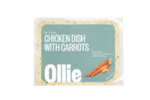 | 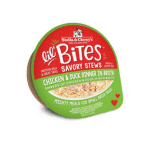 | 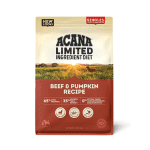 |
| Wellness Core | The Farmer’s Dog | Ollie | Stella & Chewy’s | Acana |
| View on Chewy | Visit Website | View Website | View on Chewy | View on Amazon |
| Read Review | Read Review | Read Review | Read Review | Read Review |
Why Is Small Breed Puppy Food Important?
Small-breed puppy food is important for its nutritional value, calorie content, and physical size. Small breeds like the Chihuahua have higher metabolisms and need nutrient-dense high-calorie foods. This does not mean giving a Chihuahua 325 calories daily will be healthier. That will simply make a dog overweight. Small-breed recipes are specifically formulated to provide nutrient-dense meals without high levels of fiber or fat.
Smaller-sized or small-bite chow is also beneficial. Smaller-sized kibbles are often more appealing than larger chunks. Larger kibbles can be harder in texture and more difficult for Chis to fit in their mouths. Food developed for smaller breeds is nutrient-dense, sized for their mouths, and easier to chew. This is important, as dental health is a big concern for the Chihuahua.
What Nutrients Do Chihuahua Puppies Need?
Protein
High-quality dog nutrition will include real meat, organ meat, fresh vegetables, fruit, and plenty of vitamins and minerals. Named animal proteins, including chicken, turkey, duck, rabbit, eggs, and fish, are excellent choices. Lamb and beef can be fed in moderation, though red meat can lead to a higher incidence of cancer in canines. Protein is especially important as it provides energy and supports growth, muscle mass, and development. Always look for products that name animal protein as the first ingredient. Meat meals, as long as they are named, are good, as these are concentrated forms of protein and are very high quality. Puppy chow should have 22% protein at a minimum.
Carbohydrates
Carbohydrates come from grains like barley, rice, and oatmeal and vegetables like peas, sweet potatoes, and lentils. Protein and fat alone are not enough to sustain a Chihuahua throughout the day; these healthy carbohydrates will help sustain active dogs throughout their day.
Fiber
Fiber provides essential components for canine digestive systems. These help keep stools healthy and are found in many fruits and vegetables. Fiber is very low in calories and can be found in beets, sweet potatoes, green beans, apples, carrots, strawberries, and other fruits and vegetables.
Vitamins & Minerals
Canines need vitamins and minerals just like we humans do. These support the immune system and overall development and help prevent illness and disease. Most high-quality dog foods will list real vegetables and fruits, including blueberries, cranberries, and other supplements. Nutrient-dense ingredients like meat meal, dried kelp, and seaweed meal are often also included. Puppy meals should contain vitamin D and magnesium.
Omega Fatty Acids
Omega fatty acids are essential components of canine health from puppyhood to adulthood. Fat intake should be monitored, but these are healthy fats that support skin and coat health. They are also important in eye health, brain development, and immune system boosting. These can be found in fish, fish oils, meat, and other oils like sunflower. Fat should make up anywhere between 11 and 15% of dog food. DHA is an essential element for brain health.
How Much Do Chihuahua Puppies Grow?

They will double in size within these first few weeks, though they will still only weigh just a few pounds. You can expect a Chi puppy to add 5 to 10% of body weight daily. Between 11 and 15 weeks, you will experience rapid growth, and most will reach their adult size around nine months old. They will continue to fill out and mature for several months, but rapid growth is limited to the first six months of life.
Keeping Your Chihuahua At The Right Weight
Setting a feeding schedule and monitoring how much your Chihuahua puppy eats is important. Even though these dogs are quite small, they love food. They will happily overeat if allowed. Free feeding is suitable for some pups, but we have noticed that these dogs can be very possessive about their food. Because of this, it is wise to feed them separately rather than around other pets. Chihuahuas are known to eat very quickly or hide meals, so other pets do not get it. They will also try to sneak bites, or the entire bowl, of other pets’ food when given the opportunity.
Because their bodies are so small, any extra weight has a significant impact both on their physical body and overall health. Carrying around even an extra half a pound will put undue pressure on their bones and joints. Offer your pup regular, supervised meals throughout the day. Watch her eat and give her about 30 minutes before taking the chow away.
It is also essential to avoid giving your Chihuahua too many treats and human foods. Because these dogs are so small, they often get away with bad behavior. They are also charming, and owners are prone to give in to those begging eyes for a bite of pizza, fried chicken, or beef jerky. Make sure to provide plenty of exercise to keep your pet in good health.
Frequently Asked Questions
How often should I feed my Chihuahua?
How often you should feed a Chihuahua depends on her age. Young puppies under three months old should be offered chow four to six times daily. After three months to six months old, they should eat between three and four meals daily. As adults, they can eat between two and three times a day.
Can you feed a Chihuahua once a day?
No, this is absolutely not enough sustenance or energy to support your dog and keep her healthy. Chihuahuas should eat between two and four meals a day on average.
Should my Chihuahua eat dry or wet food?
You should feed your Chihuahua a mixture of both dry and wet. Both have advantages and should be used together to provide a pet with complete and balanced nutrition. Kibble can be their regular diet. However, offering canned occasionally offers extra nutrition, flavor, and moisture. Some Chihuahuas with picky eating habits or sensitive stomachs may need to be on a wet food-only diet. Ideally, dogs will have both wet and dry meals.
On average, how much does a Chihuahua eat?
On average, adult Chis will eat between 1/4 and 1/2 a cup of food per meal.
Can I feed my Chihuahua human-grade meals?
Yes, you can feed your Chihuahua human-grade meals. There are plenty of subscription services, some foods available in the grocery store or pet store, and owners can always prepare fresh meals. That said, the fresh food delivery options generally offer high quality, great-tasting nutrition that saves owners the trouble of cooking every day and meets a dog’s exact nutritional needs.
Final Thoughts
Chihuahuas are a beloved breed of tiny dogs known for their cute stature and prominent personalities. Feeding these little dogs is very important. These dogs need top-quality nutrition from the first days of puppyhood until their senior years. Owners need to pay attention to what they are feeding their dogs and how often they feed them and note if there are any digestive or dental issues.
Making sure you choose food that is easy for your Chihuahua to chew is a big deal. We can speak from first-hand experience that these dogs have very sensitive teeth, and kibble that is too large or too hard can cause injury or even break their teeth. Because of this, it’s advisable always to pick a small breed option. Our Chihuahua feeding chart is an excellent resource with helpful information that can make feeding your Chihuahua easier. Remember, owning a beloved canine like the Chihuahua is a wonderful experience and a huge responsibility. Make sure you feed your pup the best food you can afford, and always pay attention if she is not eating or is having difficulty with her food. High-quality nutrition is the cornerstone of lifelong health.
Do you feel comfortable knowing how much to feed your Chi? Any questions please ask me in the comments!
